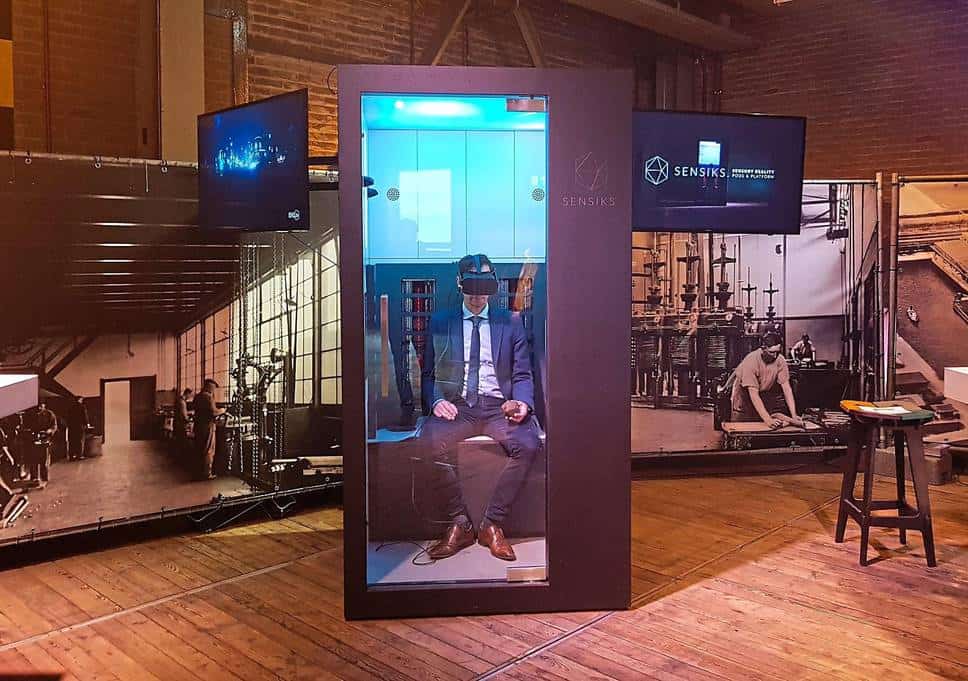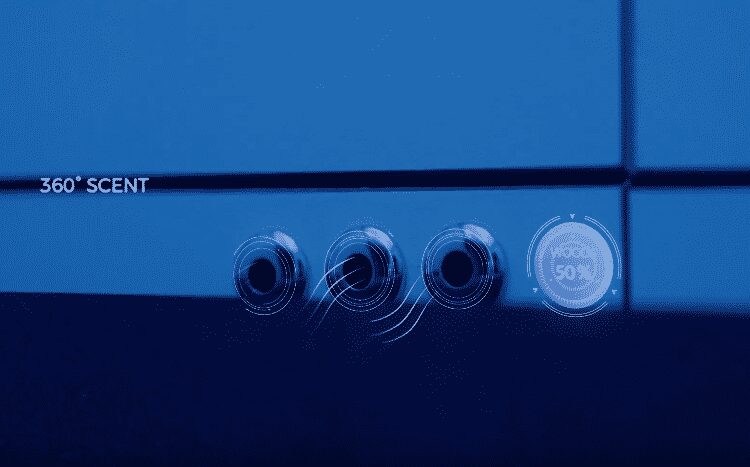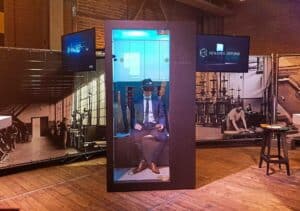Sensation in VR outside of haptic vests remains a major challenge. We’ve tried immersive experiences incorporating smell and wind and they’ve always left us wanting more. Or wishing the developers had just left our senses alone and concentrated on the visuals.
Probably one of the most effective uses of sensation in VR we’ve encountered is in the VR experience, Tree, where you become a tree in the Amazon rainforest. At one point in the experience, an assistant literally snuffs out a match under your nose. The smell of burning wood fits perfectly with the burning trees around you as you fall victim to the rapacious appetite of illegal loggers in the rainforest.
But a new development from an Amsterdam-based startup Sensiks may revolutionize sensation in VR. The product is a pod (shaped like an old telephone booth) that provides a variety of sensations including wind, smell, and temperature.

According to Dieter Holger in VR Scout,
The startup provides a platform where VR creators can “sensify” and sell their content for use in the booths. Sensiks takes a 20 percent commission with the remaining earnings going to the developer. As of today, the company has around 50 SR experiences available . . . .
There’s obvious potential here in marketing – think car manufacturers and vacation providers. But there are therapeutic uses as well.
. . . . it can help people who are sensory deprived like dementia or chemotherapy patients. Next week, a pod commissioned by the pediatric cancer non-profit Prinses Maxima will open at a hospital in Utrecht.
So far, the company has shipped 25 of the pods with another 50 on order. Not bad for a little over a year since their launch at SXSW.
Here’s Sensik’s short promo video:
One thing you won’t be doing in Sensik’s pod is walking around using room scale VR. Actually, you can’t even turn around in it – though that’s a feature marketers may like in trying to get potential consumers to focus on a product.

A future of sensation in VR
So far our visual displays (despite their own weaknesses) are far ahead of the tech for providing sensation in VR. There are experiments with haptic gloves and the Japanese video game company Koei Tecmo has designed “VR Sense”, a futuristic dedicated VR arcade cabinet. But as with Sensik’s pod, the products are massive and expensive.
These are just initial steps in the direction we are headed. In the coming decade, VR will be so much more than visual experiences, opening up fascinating opportunities for learning. And at the same time, retailers and others will be targeting all of our senses.
It will make our current VR headsets and 4D theaters seem like so many children’s toys.
Emory Craig is a writer, speaker, and consultant specializing in virtual reality (VR) and artificial intelligence (AI) with a rich background in art, new media, and higher education. A sought-after speaker at international conferences, he shares his unique insights on innovation and collaborates with universities, nonprofits, businesses, and international organizations to develop transformative initiatives in XR, AI, and digital ethics. Passionate about harnessing the potential of cutting-edge technologies, he explores the ethical ramifications of blending the real with the virtual, sparking meaningful conversations about the future of human experience in an increasingly interconnected world.

